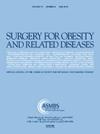原发性胃套管切除术后翻修或转换手术的术后结果:MBSAQIP数据库分析
IF 3.8
3区 医学
Q1 SURGERY
引用次数: 0
摘要
背景:相当大比例的接受原发性袖式胃切除术(SG)的患者需要改良或转换代谢和减肥手术(MBS)。尽管实践中采用了各种方法,但对短期结果的比较分析仍然有限。目的:我们回顾性比较分析了原发性SG后改良或转换MBS的术后结果。设置:2020-2022 MBSAQIP数据库。方法:我们纳入了接受以下任何一种手术的患者:改良SG (Re-SG), Roux-en-Y胃旁路术(SG- rygb),胆胰分流/十二指肠开关术(SG- bpd /DS),单吻合式十二指肠油旁路术(SG- sadi)或单吻合式胃旁路术(SG- oagb)。我们的主要终点是30天的主要并发症,定义为Clavien-Dindo分级≥II。结果:在33,348例修改/转换MBS中,SG-RYGB最为常见(n = 27,393, 82.1%)。与SG-RYGB相比,Re-SG组30天主要并发症的发生率较低(比值比[OR] .75, 95%可信区间[CI] .61- 0.90)和SG-SADI组(比值比[OR] .75, 95%可信区间[CI] .57 - 0.97)。然而,Re-SG和SG-SADI吻合口或缝合线泄漏的几率较高(or 2.74;95% ci 1.78-4.12, OR 2.44;95%-CI分别为1.35-4.17)。此外,Re-SG(平均差1.66天,95% ci 0.44 - 2.88)和SG-SADI(平均差3.0天,95% ci 1.31- 4.70)均导致再入院时住院时间更长。结论:在我们的分析中,Re-SG和SG-SADI与SG-RYGB相比,30天主要并发症的发生率较低,但吻合口或钉线泄漏的发生率明显较高,再入院时住院时间较长。鉴于其有限的适应症和显著的潜在发病率,Re-SG不应常规作为原发性SG的修正手术。本文章由计算机程序翻译,如有差异,请以英文原文为准。
Postoperative outcomes following revision or conversion surgery after primary sleeve gastrectomy: an analysis of the MBSAQIP database
Background
A significant proportion of patients that undergo primary sleeve gastrectomy (SG) require revision or conversion metabolic and bariatric surgery (MBS). Despite various procedures performed in practice, comparative analyses of short-term outcomes remain limited.
Objectives
We conducted a retrospective comparative analysis of postoperative outcomes of revision or conversion MBS following primary SG.
Setting
The 2020-2022 MBSAQIP database.
Methods
We included patients who underwent any one of the following: revision SG (Re-SG), Roux-en-Y gastric bypass (SG-RYGB), biliopancreatic diversion/duodenal switch (SG-BPD/DS), single anastomosis duodenoileal bypass (SG-SADI), or one anastomosis gastric bypass (SG-OAGB). Our primary outcome was 30-day major complications, defined as Clavien-Dindo Grade≥ II.
Results
Among 33,348 revision/conversion MBS, SG-RYGB was the most common (n = 27,393, 82.1%). Compared to SG-RYGB, the odds of 30-day major complications were lower in Re-SG (odds ratio [OR] .75, 95%- confidence interval [CI] .61-.90) and SG-SADI (OR .75, 95%-CI .57 - .97). However, both Re-SG and SG-SADI were associated with higher odds of anastomotic or staple line leak (OR 2.74; 95%-CI 1.78-4.12 and OR 2.44; 95%-CI 1.35-4.17, respectively). In addition, both Re-SG (mean difference 1.66 days, 95%-CI .44 - 2.88) and SG-SADI (MD 3.0 days, 95%-CI 1.31- 4.70) resulted in longer hospital stays upon readmission.
Conclusions
In our analysis, Re-SG and SG-SADI had lower odds of 30-day major complications compared to SG-RYGB, but had significantly higher odds of anastomotic or staple line leak and had longer hospital stays on readmission. Given its limited indications and significant potential morbidity, Re-SG should not be routinely offered as a revisional procedure for primary SG.
求助全文
通过发布文献求助,成功后即可免费获取论文全文。
去求助
来源期刊
CiteScore
6.70
自引率
12.90%
发文量
570
审稿时长
56 days
期刊介绍:
Surgery for Obesity and Related Diseases (SOARD), The Official Journal of the American Society for Metabolic and Bariatric Surgery (ASMBS) and the Brazilian Society for Bariatric Surgery, is an international journal devoted to the publication of peer-reviewed manuscripts of the highest quality with objective data regarding techniques for the treatment of severe obesity. Articles document the effects of surgically induced weight loss on obesity physiological, psychiatric and social co-morbidities.

 求助内容:
求助内容: 应助结果提醒方式:
应助结果提醒方式:


